F027 Fenton APRIL SHOWERS RARE Lavender OPALESCENT Carnival Glass 10½ Vase
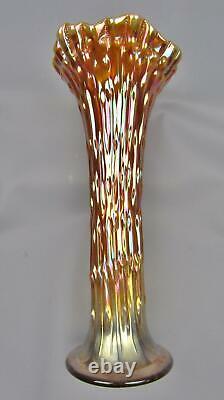
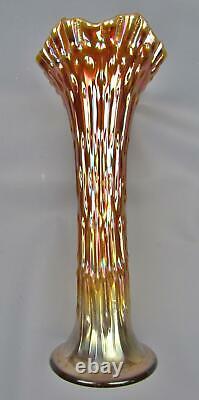
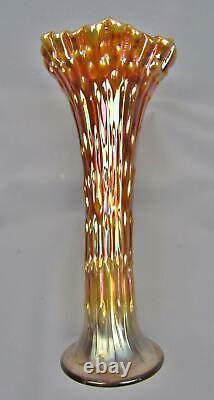
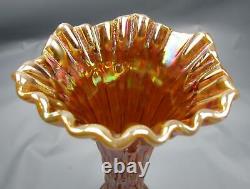
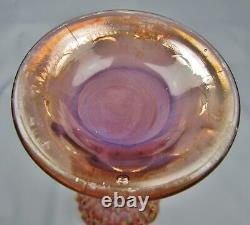
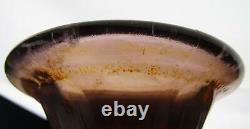

RARE Lavender OPALESCENT Carnival Glass 10½ APRIL SHOWERS Crimped Vase by Fenton, in excellent undamaged antique condition. FENTON ART GLASS COMPANY 1905 - 2011. John later founded Millersburg Glass Co. Introduced America to inexpensive iridized glassware in 1907.
Their innovative process involved spraying hot glass with proprietary solutions of metallic salts to produce a microscopically-thin layer of metal which bonded to the glass on a molecular level. Different salts and multiple sprayings influenced the color and intensity of the iridescence which makes Carnival Glass so beautiful and collectible. Nearly 150 patterns in Carnival Glass are credited to the Fenton Art Glass Company. Item has no post-production damage such as chips or cracks.
It may have discernible minor wear from usage and/or nesting (stacking). This wear will be mentioned and/or highlighted with its own photo. In my opinion, there are very, very few pieces of Carnival Glass that don't have an imperfection of some sort, whether from production or use, that can't be found with careful inspection, but that doesn't impact the presentation. Production conditions in the early 1900s were dirty and dangerous; there was no "Quality Control" as we know it now. Issues resultant from these conditions include.
Air bubbles in the glass that were not squeezed out during pressing. Heat checks which are internal rifts filled with air (which is why you can see them), usually from a burst air bubble. Inclusions in or on the surface of the glass, such as ash and cinders.
Often found in the flames of vases and rims of bowls were it settled during pressing. Strands of undissolved colorant (usually in green glass). In the glass caused by premature solidification where the molten glass was. Snipped from the gathering rod with cool metal shears when the mould was full; lines also formed on the surface during the cooling process. Tool marks from implements used to form the edge or influence the shape. Mold issues related to filling and release such as incomplete or malformed edges. Rough seams, extra glass at seams; webbed, incomplete or pulled edge points.Uneven legs, slanted stems or a bowed base (causing rocking), surface lines and heat checks. Production issues may be undesirable in the extreme, but they do not qualify as "damage" and will be found to some degree on nearly all antique glassware. Issues of wear will be left to your discretion. All items are bubble wrapped. No tape is used on the bubble wrap YAY!
Carton voids are filled with cushioning peanuts. Cartons are labeled GLASS or FRAGILE, and. Auctiva offers Free Image Hosting and Editing. The item "F027 Fenton APRIL SHOWERS RARE Lavender OPALESCENT Carnival Glass 10½ Vase" is in sale since Saturday, October 24, 2020. This item is in the category "Pottery & Glass\Glass\Glassware\Carnival Glass\Vintage (Pre-1940)\Fenton".
The seller is "carnivalglasskingdotnet" and is located in Rock Spring, Georgia. This item can be shipped worldwide.
- Glassmaking Technique: Pressed and Iridized
- Original/Reproduction: Antique Original
- Type of Glass: Carnival
- Object Type: Vase
- Color: Lavender
- Manufacturer: Fenton
- Time Period: Vintage (Pre-1940)

